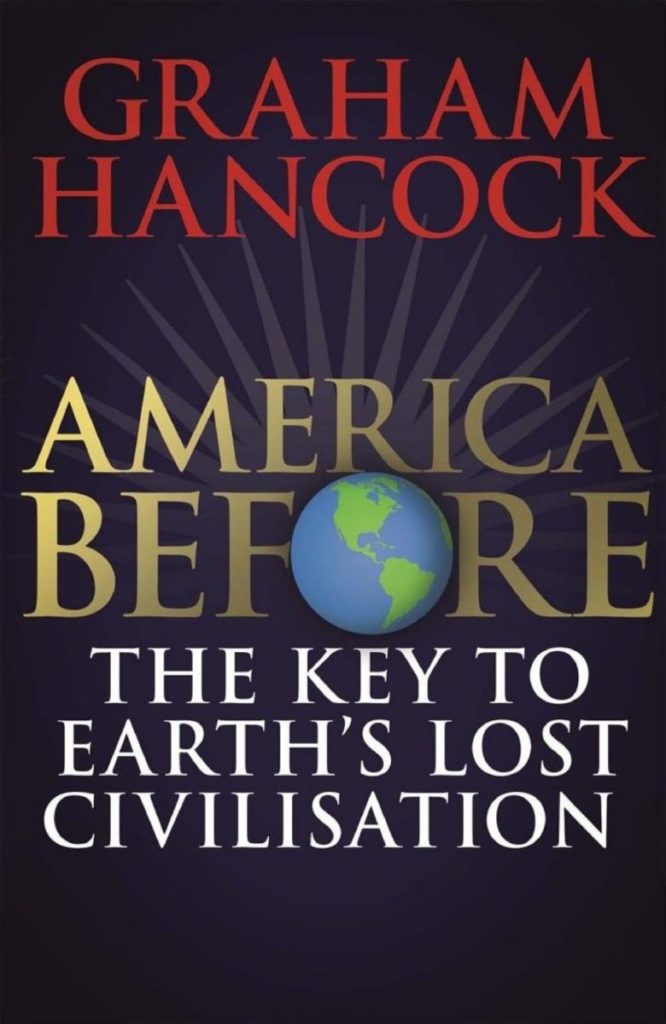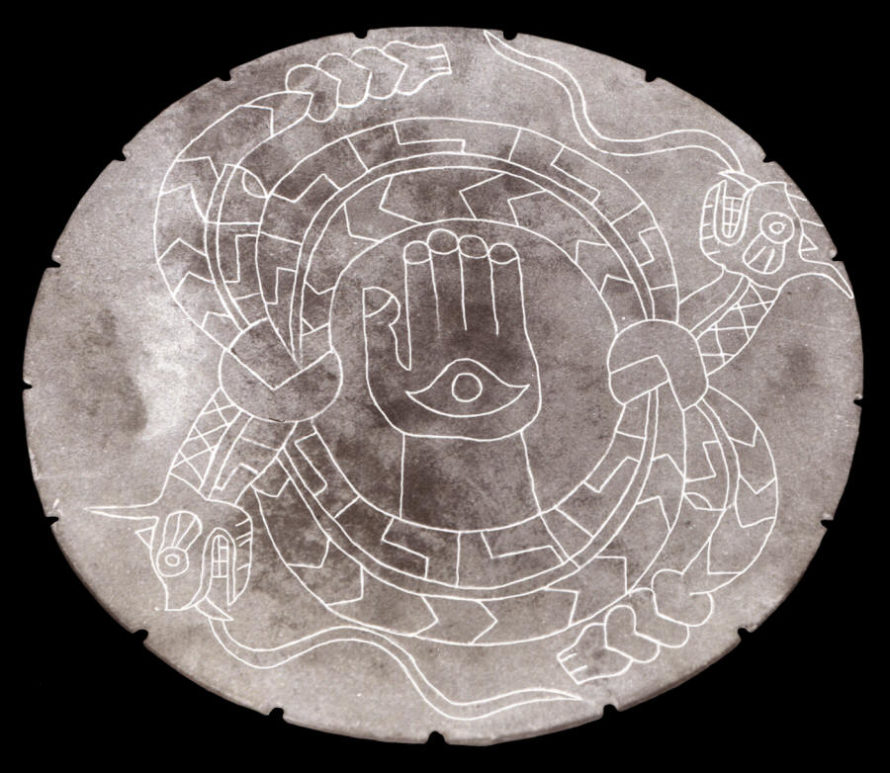At this point in the game you should understand: ALL HISTORY the endowment enriched ‘academic’ organizations have shoveled into the debt-ridden student-plebes is complete BULLSHIT. None of it is true. Your history is FAKE AS FUCK. Just like the PCR test, just like this FAKE PANDEMIC, just like face mask wearing children— CDC, WHO garbage heap of lies lies lies. Your entire life is a lie.
What is the truth? We will never know because ‘they’ made a concerted and GRAND effort to cover over the truth. However, giving any consideration, time, or thought to their narrative is going to kill you and your family. That’s why it’s important to search.
What is RIGHTEOUS? Is it putting the children is face diapers? No. Is it subjecting the children to FAKE PCR Tests? No. Is it injecting the children with corporate mystery syrup? No. IS it lockdowns and social distancing? No.
At this point in the game you should understand that we are BEING LIED TO.
America Before by Graham Hancock.

Why do Native American religions parallel Egyptian spiritual beliefs? Why do they both believe in sky-earth constructions that are perfectly aligned with the celestial clock of solstice and equinox markers? Why did ‘they’ ensure the great mounds of Native America were largely destroyed?
How could these spiritual beliefs match through millennia of prehistory when our ENDOWMENT ENRICHED INSTITUTIONS ensure us ‘that is impossible’?
What is Terra Preta, a geoengineering project of soil amendment technology from the Amazon (Amazon Dark Earth ADE) that our modern day “science’ cannot duplicate?
Why do the Trees in the Amazon match domesticated levels of mean distribution.
Why did ‘they’ burn all of the Mayan books?
How do ‘they’ explain the genetic distribution of Amazon and Indigenous Australian heritage?
What happened 12,800 years ago that ravaged the North American continent? (Younger Dryas Cosmic Impact- YDCI)
Why are ‘they’ lying to us?

Some of my highlights and notes:
America Before: The Key to Earth’s Lost Civilization: A New Investigation Into the Mysteries of the Human Past by the Bestselling Author of Fingerprints of the Gods and Magicians of the Gods by Graham Hancock
Book last read: 2021-05-21 14:11:18
Percentage read: 99%
Chapter 8: 1. An Enchanted Realm
Annotation
Chapter progress: 2.91%
Highlight: Far from being very recent, it is beginning to look as though the human presence in the Americas may be very old—perhaps more than 100,000 years older than has hitherto been believed.
Notes: Lies upon lies to hide the people of the book.
Chapter 10: 3. The Dragon and the Sun
Annotation
Chapter progress: 8.72%
Highlight: It’s a transformation and a transition rather than an abrupt change of state.
Notes: Yep
Chapter 13: 5. Message from a Mastodon
Annotation
Chapter progress: 11.28%
Highlight: In a museum in a park named after an arriviste European adventurer, we were about to be shown evidence that might speak to the truly vast antiquity of Native Americans in the lands that Europeans had stolen from them with fire and sword.
Notes: Balboa Park San Diego.
Chapter 14: 6. Millennia Unaccounted For
Highlight
Chapter progress: 14.53%
Highlight: Buttermilk Creek, Texas;
Chapter 21: 11. Ghost Cities of the Amazon
Highlight
Chapter progress: 24.1%
Highlight: Brother Gaspar de Carvajal, a literate and sensitive Dominican friar who kept a journal throughout.
Chapter 22: 12. The Ancients Behind the Veil
Annotation
Chapter progress: 27.69%
Highlight: Part of our predicament, therefore, as a species with amnesia, is that huge areas of the planet that we know for sure were used by and lived upon by our ancestors—the submerged continental shelves, the Sahara desert, the Amazon rainforest—have, for a variety of practical and ideological reasons, been badly served by archaeology. The truth is, we know VERY little about the real prehistory of any of these places, and the tiny patches that have thus far been surveyed and excavated within them are no legitimate basis upon which to draw conclusions and express certainties about the vast areas that remain unsurveyed and unexcavated.
Notes: The failure of so called archeology.
Chapter 23: 13. Black Earth
Annotation
Chapter progress: 28.03%
Highlight: It is called Terra preta. More than any other single factor, it is now understood by scholars to have been responsible for the astonishing and utterly anomalous agricultural productivity that allowed a population estimated at between 8 and 20 million people4 to thrive for untold epochs in the Amazon before being overtaken by the cataclysm of the European conquest.
Notes: Miraculous Amazon soil ammendment
Chapter 23: 13. Black Earth
Annotation
Chapter progress: 28.55%
Highlight: Nobody doubts that they are “anthropogenic”—man-made in some way—and everyone agrees that they’re an amazing success story. So fecund is terra preta, even after thousands of years of use, that it can still regenerate barren soils it is added to, and has been described as “miracle earth.”16
Notes: Humans cannot survive without the gift of technology. Gifted soil.
Chapter 23: 13. Black Earth
Annotation
Chapter progress: 29.06%
Highlight: Yet all this mystery, all this effectiveness, all this efficiency, and all these remarkable contributions to welfare, we are asked to believe, came about as incidental by-products of human activity? They just happened—without any planning, or deliberation, or design at all?
Notes: Our history is a lie.
Chapter 23: 13. Black Earth
Annotation
Chapter progress: 29.57%
Highlight: More specifically, the proposition we are presently considering in this context is that the settlement and expansion of human populations in the Amazon was a planned affair in which the spread of terra preta was a precondition for the development of large population centers rather than a consequence of it.
It was, in other words, not something random at all but an integral part of a carefully thought-out project.
Notes: Assisted humanity
Chapter 23: 13. Black Earth
Annotation
Chapter progress: 29.57%
Highlight: This civilization thrives for millennia, long outlasting ancient Egypt and ancient Mesopotamia, doing very well for itself and for its people in just about every possible way, until the catastrophe of European contact that not only subjects it to genocide by sword and by epidemic, but also conspires to deny its very existence for centuries thereafter.
Notes: Exemplary argonomy.
Chapter 24: 14. Gardening Eden
Annotation
Chapter progress: 29.91%
Highlight: Among the favored species mentioned in the Science paper, now all hyperdominant, are Bertholletia excelsa (the Brazil nut tree), Inga edulis (“Ice-Cream Bean,” a fruit tree), Pourouma cecropiifolia (“Amazon Grape,” a fruit tree), Pouteria caimito (the abiu, a fruit tree), and Theobroma cacao (the cocoa tree—chocolate).11
Notes: Cultivated trees of the Amazon
Chapter 24: 14. Gardening Eden
Annotation
Chapter progress: 30.6%
Highlight: What I have in mind is the possibility that a deep knowledge of plants and of their nutritional and other properties might have preceeded the first domestication activities that we have evidence for. Surely it is only on the basis of such foreknowledge that crops like groundnuts and manioc could be selected, domesticated, planned, and planted to complement each other’s nutritional contribution to human welfare?
Notes: Alien overlords told the people to domesticate cassava for carbs and peanuts for protein.
Chapter 24: 14. Gardening Eden
Annotation
Chapter progress: 30.94%
Highlight: Anthropologist Jeremy Narby, author of The Cosmic Serpent: DNA and the Origins of Knowledge, draws attention to curare, the blow-gun and arrow poison, invented—we do not know when—in the ancient Amazon.
Notes: how did they invent the poison for the blow dart? alien technology
Chapter 24: 14. Gardening Eden
Highlight
Chapter progress: 30.94%
Highlight: final product is a paste that is inactive unless injected under the skin. If swallowed, it has no effect. It is difficult to see how anybody could have stumbled on this recipe by chance experimentation.
Chapter 27: 17. The Vine of the Dead
Annotation
Chapter progress: 36.92%
Highlight: The true shaman must attain his knowledge and position through trance, vision and soul-journey to the Otherworld. All these states of enlightenment are reached … during a shamanic state of consciousness, and not by purposive study and application of a corpus of systematic knowledge.8
Notes: The medicine man
Chapter 27: 17. The Vine of the Dead
Highlight
Chapter progress: 37.09%
Highlight: THE BIG PICTURE OF SHAMANISM, altered states of consciousness, and their immensely important place in the human story—was the focus of my 2005 book Supernatural: Meetings with the Ancient Teachers of Mankind.
Chapter 27: 17. The Vine of the Dead
Annotation
Chapter progress: 37.27%
Highlight: It is, in my view, a remarkable scientific feat that such a highly effective combination of just 2 out of the estimated 150,000 different species of plants, trees, and vines in the Amazon was discovered by mere trial and error.
Notes: Ahuyasca
Chapter 27: 17. The Vine of the Dead
Annotation
Chapter progress: 37.95%
Highlight: It seems that “supernatural beings” accompanied them on this journey and gifted them the fundamentals upon which to build a civilized life.
Notes: overlords gifting technology
Chapter 29: 18. Sun
Highlight
Chapter progress: 40.17%
Highlight: considers Monks Mound to have been conceived by its designers as a true “axis mundi”—intended to serve as a junction point between heaven and earth.
Chapter 35: 23. The Portal and the Path
Annotation
Chapter progress: 52.31%
Highlight: George Lankford gives an overview of such myths across North America and confirms the very widespread nature of the “fearsome image of a ‘brain-smasher,’ usually a woman, whose task is to destroy memory (and humanity?) by removing or smashing the brain.
Notes: Watch out for the woman w a hatchet.
Chapter 35: 23. The Portal and the Path
Annotation
Chapter progress: 52.48%
Highlight: That the precise character of these obstacles should vary between ancient Egypt and ancient Native America is only to be expected. Even so, the striking similarities in the core structure of the “story”—physical death, a journey of the soul on land, a leap to the sky involving Orion followed by a further journey with perils and challenges to be faced, through the valley of the Milky Way—all argue for some as yet unexplained connection.
Notes: Egyptian and Native American equalities.
Chapter 35: 23. The Portal and the Path
Annotation
Chapter progress: 52.82%
Highlight: That the Underwater Panther was seen as having feline characteristics, however, is certain from a number of surviving images of the creature.
Notes: On the underwater Panther.
Chapter 39: 26. Fire and Ice
Annotation
Chapter progress: 60.85%
Highlight: Extraordinary Biomass-Burning Episode and Impact Winter Triggered by the Younger Dryas Cosmic Impact ~12,800 Years Ago.”
Notes: Nine percent of all biomass was incinerated.
Chapter 39: 26. Fire and Ice
Annotation
Chapter progress: 61.37%
Highlight: In summary, the earth and all life upon it endured and was devastated by what can only be described as a globally distributed firestorm at the onset of the Younger Dryas around 12,800 years ago. In this planetary debacle, 10 million square kilometers of trees and other plant matter burned.
Notes: Summary of hell on earth.
Chapter 40: 27. Cape Fear
Annotation
Chapter progress: 63.42%
Highlight: Science in the twenty-first century does NOT encourage scientists to take risks in their pursuit of “the facts”—particularly when those facts call into question long-established notions about the human past.
Notes: Science is garbage.
Chapter 40: 27. Cape Fear
Annotation
Chapter progress: 65.47%
Highlight: Once again, therefore, as so often in science, statements touted as facts turn out to be opinions contradicted by other opinions that are also touted as facts.
Notes: Most science is garbage
Chapter 40: 27. Cape Fear
Annotation
Chapter progress: 65.98%
Highlight: Worse still, this pervasive state of fear has somehow ingrained itself so deeply into the fabric of science that those who have embraced unorthodox possibilities themselves are often among the least willing to consider unorthodox possibilities embraced by others—lest by doing so they “contaminate” their own preferred unorthdoxy.
Notes: Scientists are garbage
Chapter 42: 28. Hunter-Gatherers and the Lost Civilization
Annotation
Chapter progress: 67.52%
Highlight: extremely prolific Clovis site of Gault, Texas, have likewise revealed deeper, pre-Clovis levels.
Notes: Gault Texas
Chapter 43: 29. Unknown Unknowns
Annotation
Chapter progress: 68.21%
Highlight: But keep in mind that those enormous floods also devastated the rich North American mainland to the south, perhaps the best and most bounteous real estate then available anywhere.
Notes: The mormons were right.
Chapter 43: 29. Unknown Unknowns
Annotation
Chapter progress: 68.55%
Highlight: In July 1562, in the main square of Mani (just south of modern Merida in the Yucatan), Bishop Diego de Landa burned thousands of Maya codices, story paintings, and hieroglyphs inscribed on rolled-up deer skins. He boasted of destroying countless “idols” and “altars,” all of which he described as “works of the devil, designed by the evil one to delude the Indians and to prevent them from accepting Christianity.
Notes: Systematically hiding the Isrealites and rewiting history.
Chapter 43: 29. Unknown Unknowns
Annotation
Chapter progress: 68.55%
Highlight: . In the city’s marketplace Zumarraga “had a pyramid formed of the documents of Aztec history, knowledge and literature, their paintings, manuscripts, and hieroglyphic writings, all of which he committed to the flames while the natives cried and prayed.
Notes: span ish liars
Chapter 43: 29. Unknown Unknowns
Annotation
Chapter progress: 68.89%
Highlight: Let’s take a brief look at the most ancient Native American book still in existence—the Dresden Codex, so called because it’s kept in a museum in the German city of Dresden.16
Notes: Oldest Native American Book!
Chapter 43: 29. Unknown Unknowns
Annotation
Chapter progress: 68.89%
Highlight: This evidence, I submit, now exists in the astonishing proximity of the religious beliefs, iconography, and symbolism of the Mississippi Valley to the religious beliefs, iconography, and symbolism of ancient Egypt outlined in part 6. These deep structural connections are, in my view, unexplainable by any means other than a shared legacy from a very ancient source—a source predating the separation of peoples when the Americas became isolated from the “Old World” by the rising oceans at the end of the Ice Age.
Notes: Nice summary of this book.
Chapter 43: 29. Unknown Unknowns
Annotation
Chapter progress: 69.23%
Highlight: All the indications are that Mexico, with its ancient tradition of literacy, was once a vast archive of the “antiquities and sciences” of former times and that the records the Spaniards destroyed in their zealous stupidity may have been as integral to the memory of humanity as the library of Alexandria.
Notes: Learn span ish
Chapter 43: 29. Unknown Unknowns
Annotation
Chapter progress: 69.23%
Highlight: . Once again, this effort, officially sanctioned as “the extirpation of idolatry,” called for cultural destruction on a grand scale, calculated to erase the memory banks of the population within a generation or two and replace their deep connection to their own past with the new dispensation.
Notes: Inca in Puru. Destroyed by span ish
Chapter 43: 29. Unknown Unknowns
Annotation
Chapter progress: 69.23%
Highlight: In the event, however, out of the tens of thousands of Mayan codices in existence in 1519 just four are still with us in the twenty-first century.
Notes: FOUR
Chapter 44: 30. The Key to Earth’s Lost Civilization
Annotation
Chapter progress: 71.62%
Highlight: Americas were isolated during much of the Ice Age—a geological epoch that lasted, let us not forget, from around 2.6 million years ago until around 12,000 years ago.
Notes: Ice Age
Chapter 44: 30. The Key to Earth’s Lost Civilization
Highlight
Chapter progress: 72.65%
Highlight: In his 1920 study The Interpretation of Radium, Nobel Prize winner Frederick Soddy,
Chapter 44: 30. The Key to Earth’s Lost Civilization
Highlight
Chapter progress: 74.19%
Highlight: The North American Indian Orpheus Tradition.

Leave a Reply